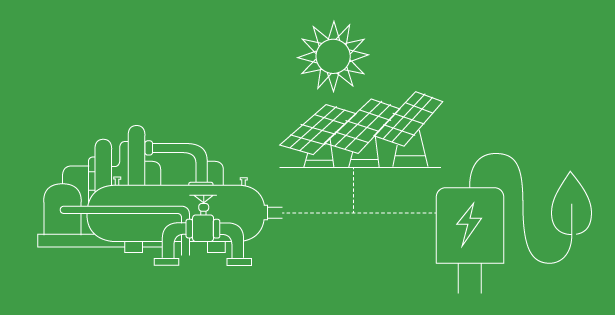There are several reasons to calculate your company’s greenhouse gas emissions, including compliance with direct or indirect regulations, reducing operating costs, enhancing your reputation and brand image, and meeting stakeholder expectations to name a few. Once your company has its emissions measured you can benchmark where you are currently and then set Goals to reduce your emissions.
Setting up Greenhouse Gas (GHG) reduction goals involves a structured approach that includes:
- Defining the Scope of GHG emissions
- Establishing a baseline emission inventory
- Setting clear, measurable reduction targets
- Create a reduction strategy to then measure against
- Engage your organizations stakeholders
- Implement the reduction measures
- Monitor progress and measure
Microsoft has many solutions in its Cloud for Sustainability including the Microsoft Sustainability Manager. One of the key functions is the Scorecards and Goals functionality which provides the ability to set goals and measure your progress against your goals using the data you already gather.
Understanding the Scorecard Feature
In Microsoft Sustainability Manager, a scorecard is designed to help organizations track and manage their sustainability metrics. It serves as a centralized tool to view and monitor these metrics in one place. The scorecard feature enables you to align business objectives with organizational goals, providing a clear overview. Within the Scorecard section, you can add multiple goals, making it easy to track progress.
Think of the Scorecard like a book—just as a book contains multiple chapters on the same topic, a scorecard allows you to include multiple goals within a single section for easier navigation. If your organization has goals across various sustainability initiatives, you can create multiple
scorecards for better organization. A key benefit of scorecards is that they can incorporate charts from PowerBI and other data sources, making it simple to visualize and analyze your sustainability data.
Scorecards in the Microsoft Sustainability Manager
Below is an example of a Scorecard named Carbon reduction plan 2030. At a glance you can see the overall status of the Scorecard as well as the status of the individual Goals that are part of the Scorecard.

Goals
Looking into the Reduce overall electricity consumption by 2030 goal you can see the month over month progress. These updates against the Goal and Scorecard are managed by creating Check-in records either manually or in an automated manner. The check-in allows for the addition of Notes to be able to track the conversation around the Goal to allow for better reporting.

The Scorecard and Goal functionality is not just about emissions, it can measure water and waste data as well!
Reducing your company’s emissions goes beyond compliance, it goes to your bottom line. Reach out to RSM for assistance on saving money, meeting regulations all while reducing your emissions.

 RSMUS.com
RSMUS.com![Transforming Sustainability Reporting for a Vertically Integrated Agriculture Producer [Case Study]](https://technologyblog.rsmus.com/wp-content/uploads/featured-images/all/industry-blog_fb_v1_blue.png)



